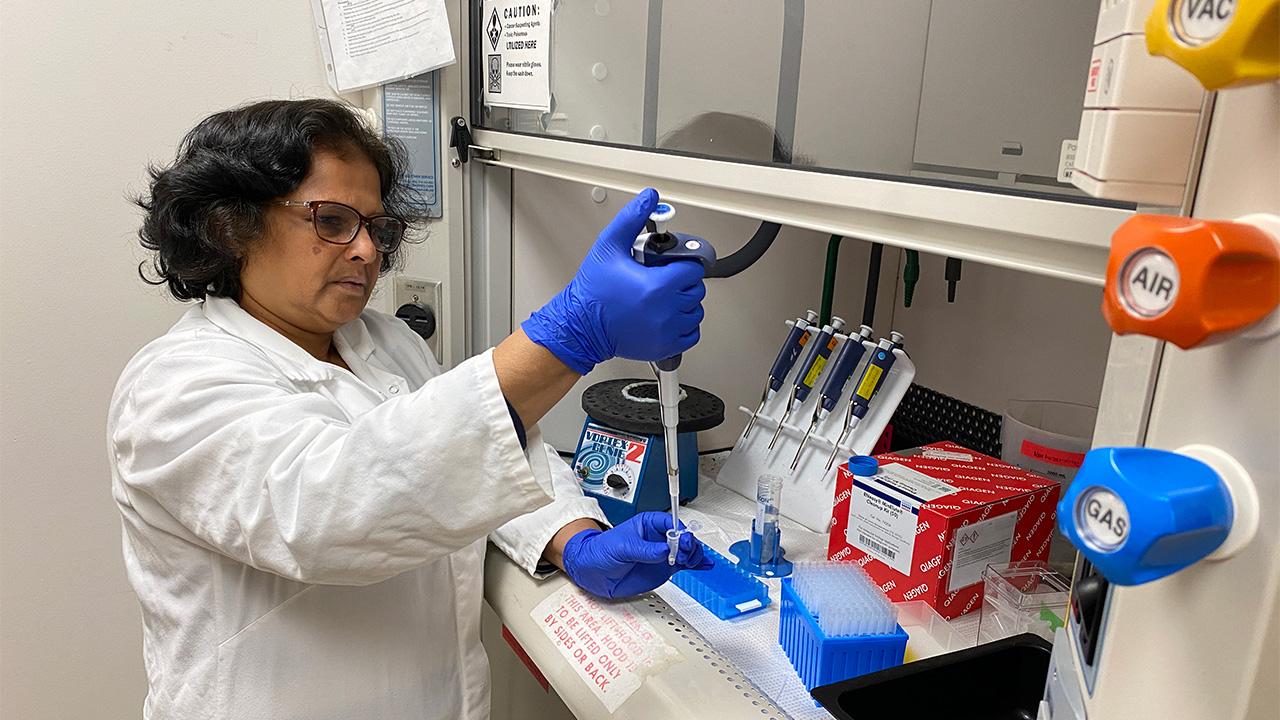
Cell wall formation offers clues to healthier walnut trees
Saxe points to pathway for faster breeding
If you’ve driven past central California’s walnut groves, you’ve seen them: Thick, rough-looking tree-trunks rise from the ground for two or three feet. Then, atop each base, a thinner trunk with smoother bark continues up and branches into majestic, green canopies spreading toward the sky.

Those lower, sometimes darker trunks are the walnut rootstocks. They have been developed over decades to combine the disease-resistance of black walnut trees with the vigor of English walnut trees. The upper part of each tree is yet another variety, grafted atop the rootstock and developed specifically to produce lots of delicious nuts.
These rootstocks fight off diseases that live in the soil and cause crown gall, crown and root rot, and root lesions -- problems that reduce the amount of nuts the tree produces and cost California farmers around $200 million to combat every year. But, warming climate, less water and poorer quality water are stressing the trees and giving pathogens the upper hand. Together, they put California’s $1.1-billion industry at risk.
Now, research from UC Davis shows that how well plants fight disease and how strong they grow are both linked to the way plants build the walls of their cells. It’s like skin that is our own first line of defense against germs. Scientists from the Department of Plant Sciences are suggesting that breeders use this new knowledge to develop new walnut rootstocks that could thrive despite the diseases attacking them.
This knowledge and the tools used to figure it out point to faster, more precise ways to breed disease-resistant walnut rootstocks -- techniques that could produce new varieties in as little as five years, or about half the time currently needed. That’s the conclusion of Houston Saxe, a doctoral candidate in the Department of Plant Sciences and lead author on a paper describing the research, which was published in the International Journal of Molecular Sciences in January.
A bonus would be trees that require fewer chemicals to help them battle the bad guys. “We want rootstocks that are more sustainable and resilient, able to protect themselves, instead of growers spraying pesticides and copper,” said Abhaya Dandekar, a distinguished professor in the department who runs the lab where Saxe works, “With climate change, we need these approaches, because pathogens have become more virulent.”
Walnuts remain among the state’s top nut crops, grown on 390,000 acres in 2021, according to the California Crop Report. Walnuts also are among California’s top exports.
Trade-off: Disease resistance vs. vigor
Saxe looked at how walnut seedlings responded to crown gall disease, crown and root rot and root lesions, and the genetic factors behind those responses. The three diseases operate in different ways, but they all strangle the flow of water and nutrients in trees.
Building on others’ work to identify disease-resistant trees and also trees that grow vigorously, Saxe looked at the genes of each, trying to figure out which genes were linked to those qualities. “We wanted to find the biological mechanism for the disease resistance,” Dandekar explained. This gets to the plant’s built-in defenses, which guard against all types of attackers. It’s an area that scientists know little about.
Saxe found a strong link between disease resistance and the genes that govern how cell walls are built, which in turn link to how vigorously the plant grows. He found that trees better at resisting disease usually grow less vigorously; more vigorous trees usually are more susceptible to disease.
“There’s a trade-off,” Saxe said. “It’s like investments, playing the long game versus the short game.”
For decades, walnut breeders have selected trees that are vigorous and produce lots of nuts. That has left the industry with hundreds of thousands of trees that are susceptible to disease -- and now, even more at risk in their changing environments.
Less-vigorous trees also usually were shorter. “This could still be a good thing,” Saxe said, given the difficulty and labor costs of managing and harvesting taller, bigger trees.

Science: Building and collaborating
The diseases Saxe and team investigated were crown gall disease (Agrobacterium tumefaciens), crown and root rot (Phytophthora spp.) and root lesions (Pratylenchus vulnus). Read their paper here, “Transcriptomic evidence of a link between cell wall biogenesis, pathogenesis, and vigor in walnut root and trunk diseases.”
Saxe’s work also demonstrates how science builds on work that has come before. The walnut seedlings that Saxe studied were hybrids developed by Charles Leslie, a long-time walnut expert, and Patrick J. Brown, an associate professor and nut crops breeder, both in the department. Leslie is the former director of, and Brown now leads, the Walnut Breeding Program of UC Agriculture and Natural Resources. Other researchers from the department included S. Lalani Walawage and Bipin Balan.
Learn more about the work of the Dandekar lab here.
For more on walnut rootstocks and scions (the upper part of the tree, which is grafted onto the rootstock and produces walnuts), see this from the UC Fruit and Nut Research and Information Center.
Media Resources
- Trina Kleist, UC Davis Department of Plant Sciences, tkleist@ucdavis.edu, (530) 754-6148 or (530) 601-6846
